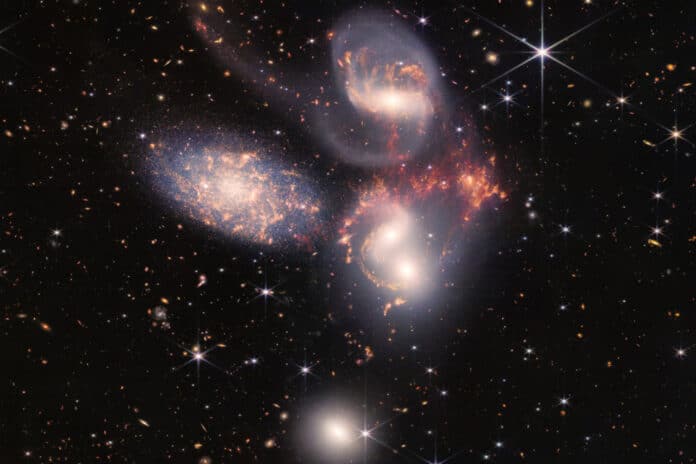A group of astrophysicists from the United States, Italy, and Japan, led by UCLA astrophysicists, has discovered new clues to the origins of the universe and dark matter. In a recent study published in The Astrophysical Journal Letters, the team ran simulations that track the formation of small galaxies after the Big Bang and included, for the first time, previously neglected interactions between gas and dark matter.
The researchers found that the galaxies created are very tiny, much brighter, and form more quickly than they do in typical simulations that don’t take these interactions into account. This discovery could have significant implications for our understanding of dark matter and the formation of small galaxies.
Dark matter is a type of hypothetical matter that does not interact with electromagnetism or light. Thus, it is impossible to observe using optics, electricity, or magnetism. But dark matter does interact with gravity, and its presence has been inferred from the gravitational effects it has on ordinary matter, which makes up all the observable universe. Even though 84% of the matter in the universe is thought to be made of dark matter, it has never been detected directly.
The team’s simulations also revealed that small galaxies may have been much brighter than expected early in the universe’s history, when they were just beginning to form. The authors suggest that scientists should try to find small galaxies that are much brighter than expected using telescopes like the James Webb Space Telescope. If they only find faint ones, then some of their ideas about dark matter might be wrong.
The new research could also provide an effective test for theories about dark matter. Because dark matter is impossible to study directly, searching for bright patches of galaxies in the early universe could offer new insights into this mysterious and elusive substance.
“The fact that they should be so bright might make it easier for the telescope to discover these small galaxies, which are typically extremely hard to detect only 375 million years after the Big Bang,” said Claire Williams, a UCLA doctoral student and the paper’s first author.
The discovery of these small, bright galaxies could help scientists better understand the origins of the universe and the role that dark matter played in its formation. The team’s research provides new clues to the nature of dark matter and could help scientists develop new theories about this enigmatic substance.
Journal Reference
- Claire E. Williams, William Lake, Smadar Naoz, Blakesley Burkhart, Tommaso Treu, Federico Marinacci, Yurina Nakazato, Mark Vogelsberger, Naoki Yoshida, Gen Chiaki, Yeou S. Chiou, and Avi Chen. The Supersonic Project: Lighting Up the Faint End of the JWST UV Luminosity Function. The Astrophysical Journal Letters, Volume 960, Number 2. DOI: 10.3847/2041-8213/ad1491
